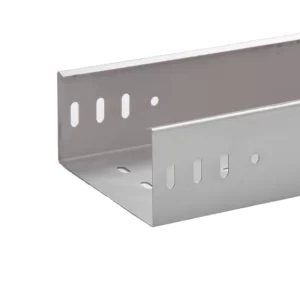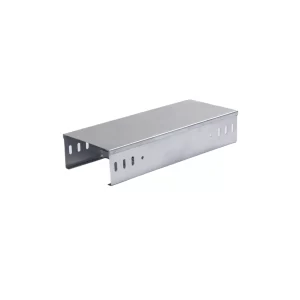When it comes to cable management systems, ladder and perforated cable trays are two common options, each with its own unique characteristics and applications.

Structural Differences
A ladder cable tray consists of two side rails connected by rungs or cross-members at regular intervals. The open design allows for easy cable placement and ventilation. On the other hand, a perforated cable tray has a solid bottom with numerous perforations or holes throughout. This provides some degree of protection to the cables while still allowing for air circulation.
For example, in an industrial environment with high levels of dust and debris, the perforated cable tray might be preferred as it offers better protection for the cables from external contaminants compared to the more exposed ladder tray.
Load-Bearing Capacity
The load-bearing capacity can vary significantly between the two types. Ladder trays are typically designed to handle heavier loads due to their stronger structural framework. However, perforated trays can also handle substantial loads depending on their design and material.
Suppose you have a large number of heavy-duty cables in a facility, a ladder tray might be the more suitable choice to ensure the integrity and stability of the cable system.
Cable Visibility and Accessibility
With a ladder tray, cables are more exposed and easily visible, making it simpler to identify and access specific cables for maintenance or additions. In contrast, the perforated bottom of a perforated tray partially obscures the cables, which could make cable identification and access slightly more challenging.
For instance, in a data center where quick and easy access to cables is crucial for troubleshooting and upgrades, a ladder tray could offer a significant advantage.

Aesthetic Considerations
In some settings where appearance matters, perforated trays might present a more finished and aesthetically pleasing look compared to the open and exposed nature of ladder trays.
For example, in commercial buildings with visible cable runs, a perforated tray could blend in more seamlessly with the overall decor.
Installation and Cost
Installation requirements and costs can also differ. Ladder trays may be easier and quicker to install in certain situations, but they can sometimes be more expensive due to their more complex construction. Perforated trays, on the other hand, might have a lower initial cost but could potentially require more time and effort during installation.
In summary, the choice between a ladder and a perforated cable tray depends on various factors such as the environment, load requirements, cable accessibility needs, aesthetics, and installation considerations. Understanding these differences is crucial for making an informed decision that best suits the specific cable management needs of a given project or facility.

